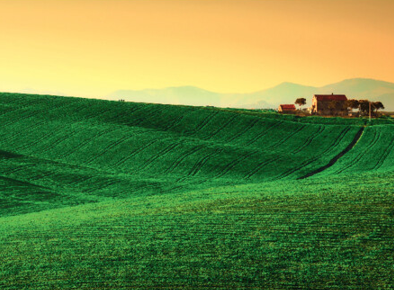
Farm subsidies and international trade rules are the subjects of a new 2023 book Agricultural Domestic Support under the WTO: Experience and Prospects. Why now? ‘It could not be more topical’ said a high-level trade official when the book appeared.
The European Union, the United States, Japan, and many other countries supported and protected farm production massively a generation ago leading to competitive subsidy cycles. They used both budgetary outlays and measures that kept producer prices high. This chaos led them to agree in 1994 to limit agricultural support under certain types of policies. The idea was to reduce the economic harm that any country’s farm subsidies inflict on other countries. The Agreement on Agriculture under the World Trade Organization (WTO) enshrined the rules and countries’ commitments within its domestic support heading.
Support that is not exempt is measured through Aggregate Measurements of Support (AMSs) for individual products and non-product-specific support to farm producers in general. Most countries face limits on individual AMSs and others face a limit on the sum of certain AMSs. Wealthy developed countries that subsidized the most historically have the most flexibility to provide support subject to limit. The exemption of other support from limit follows the requirements and criteria of what is commonly called the Agreement’s green box, blue box, and developing country provisions. Green box support includes public services expenditures, such as research or pest and disease control, and producer payments that meet specific criteria stipulated in the Agreement. Green box measures, often of a public-good nature, must have no more than minimal trade-distorting effects or effects on production. Blue box support entails constraints on output and is barely offered. Developing countries can exempt investment and input subsidies from limit even though they stimulate production, an exemption heavily used by India.
In the WTO’s Committee on Agriculture, countries review each other’s implementation of commitments based on yearly notifications that identify support policies and amounts. Notified support declined for some years after 1995 but has subsequently doubled to nearly U.S. dollars (USD) 600 billion. Exempted green box support contributed most of the increase, rising to USD 465 billion in recent years with China and the United States accounting for USD 315 billion of that amount. The sum of support other than green box has also increased since 2007 to reach USD 130 billion recently, with China and India emerging as the largest support providers. The world green box support corresponds to 12.5 percent of the world value of production, and other support to 3.5 percent. The green box percentage has increased and the other support percentage has decreased since 1995, evincing some shift towards less distorting support as envisioned in the design of the Agreement on Agriculture.
WTO disputes involving Korea, China, and India have concerned the calculation of market price support under the Agreement’s rules. Identifying the proper reference price and eligible quantity has been central in these disputes. Other disputes have related to United States cotton support contravening the WTO Agreement on Subsidies and Countervailing Measures, and to the interrelationship of domestic support and export subsidies of Canada and the European Union under the Agreement on Agriculture. The often large difference between the market price support calculated under Agreement rules and an economically more meaningful measurement remains a concern. The book suggests it could be remedied by negotiating a calculation method that uses a lagged moving average reference price in place of a fixed reference price.
Clarification and improvement of the Agreement’s rules are under negotiation for more than twenty years. Is further progress in defining international rules possible? In domestic support, countries show particular interest in the rules for exempting support from limits, the size of various countries’ limits on AMS and possibly other support, and support for cotton. The treatment of support measured under the Agreement’s rules when public stocks are acquired at a government-set price in developing countries is a high-profile topic. The WTO ministerial conference in 2013 decided on an interim basis that developing countries can under certain conditions exceed their limits on AMS support due to such market price support without facing the risk of WTO litigation. The book makes recommendations to rebalance outdated commitments and tighten the commitment levels on support subject to a limit. A permanent solution to the public stockholding issue is proposed through the revised formula for measuring price support.
Sustainable production and rules-based trade are key elements in enhancing food security in the world. The book examines how five of today’s policy priorities may be addressed under the Agreement’s green box rules: among these enhancing biodiversity and mitigating climate change along with measures to improve productivity growth, biosecurity, and water management. Expenditures can be designed for exemption from the limit as general services. Some payments for mitigation of climate change could be exemptible as payments that are not related to production or under environmental programs. Payments for the public good of climate change mitigation could, with proper measurement methods, be based on environmental outcomes instead of production practices or levels. Revised green box criteria for payments that achieve mitigation of climate change could be considered while balancing this priority against the Agreement’s objective of preventing agricultural market distortions.
Preparations are underway for the WTO ministerial conference in February 2024. The availability of economic and legal information can facilitate countries’ formulation of their interests in agriculture, including domestic support. Insights about, for example, the size and nature of support in other countries, lessons from economics and dispute settlement regarding price support calculations, and the interface between addressing today’s policy priorities and the rules for exempting support from limit can be crucial. The book Agricultural Domestic Support under the WTO: Experience and Prospects offers comprehensive information of this kind.
Latest Comments
Have your say!